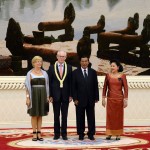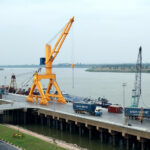Judiciary and courts
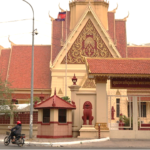
The judiciary is one of the three powers, together with the executive (the Government) and legislative (the National Assembly and the Senate), that constitute the state. 1 Its role is to monitor the application of the law and punish its violation. This power is vested ...
Securities exchange (stock market)
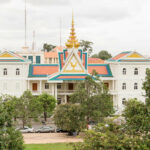
Starting from 2001, work began on promoting the formation of a Cambodian Stock Exchange (CSE or CSX) as a means of supporting the economic system in Cambodia’s development. A stock exchange facilitates the buying and selling of stocks among investors. Dr. Bit Seanglim, Chairman of ...
Administration
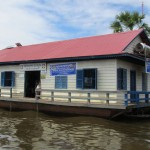
Cambodia’s sub-national administration consists of three tiers: capital city/province, municipality/district and sangkat/commune. Phnom Penh is the capital, and there are 24 provinces, 159 districts (including 26 municipalities and 12 khans), 1406 communes and 227 sangkats. ...
Plants
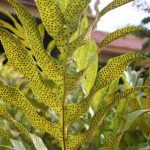
Although there are often new discoveries,89 a global lack of up to date data on botanical research makes plants biodiversity hard to assess in Cambodia. Compared to neighboring countries, the number of plant species is low, mostly due to the relative country’s flat landscape.90 Botanical knowledge ...
Forest cover
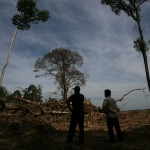
Cambodian forest cover has reduced dramatically in recent decades. In 1973 there were 13.1 million hectares of total forest, but by 2014 the total cover had fallen to 8.7 million hectares. ...
Provincial and local governments
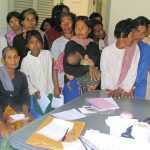
Patients are registered during the outreach screening at Vien Health Center. Photo by Community Eye Health, taken in 2006. Licensed under CC BY-NC 2.0The Kingdom of Cambodia is an indivisible state. The country’s administration at all levels and in all sectors falls under the same ...
SDG 4 Quality education
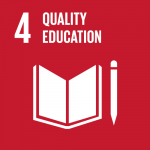
Sustainable Development Goal 4 – Ensure inclusive and equitable quality education and promote lifelong learning opportunities for all – focuses on education as a fundamental human right that is necessary for the achievement of all the SDGs.119 Education supports the achievement of gender equality by empowering women and is crucial to creating ...
Solid waste
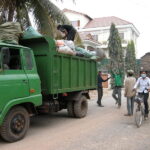
Trash collection in Siem Reap province, Cambodia. Photo taken by David Villa, taken on 12 January 2008. Licensed under CC BY 4.0 DEED.Solid waste is defined as “used things, materials, or products that remain or are generated from human daily activities and livelihood and do ...
Infrastructure
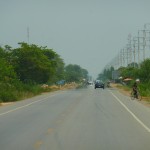
A national road in Cambodia. Photo by Pat Scullion, taken on 2 April 2010 under CC BY-NC-ND 2.0Infrastructure describes the built assets that allow a country to function, such as roads, railways, ports, airports, communication systems, electricity and drinking water distribution networks. The Ministry of ...
Forest protection support
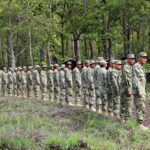
Cambodia is struggling to safeguard its forests while preserving economic growth since many people make a living via farming, logging, and other activities that might lead to deforestation. Almost 80% of Cambodians living in rural regions rely on forests for survival. On the other hand, ...
Landmines UXO and demining
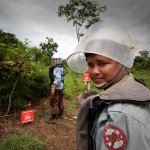
Cambodia is one of the countries most affected by land mines and explosive remnants of war as a result of its tumultuous history. The country is working with a variety of partners to demine the country by 2019. ...
Relevant ministries
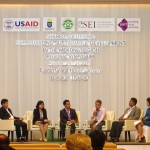
The Ministry of Environment is the main authority mandated to oversee environmental issues, including protected areas, environmental impact assessments, and management of natural resources. ...
International relations

Cambodia has strong diplomatic links with many countries. Its warmest relationship with a superpower is with the People's Republic of China. The most important economic ties are with China, the United States of America, Thailand and Vietnam. Cambodia is a member of the UN, ASEAN, ...
Forest protection NGOs
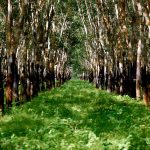
The protection of Cambodian forests is primarily the responsibility of the Ministry of Agriculture, Forests and Fisheries (MAFF) and the Ministry of Environment. There are, however, many non-governmental organizations (NGOs) working in the area, from United Nations (UN) agencies and other global bodies to locally-registered ...
Trade policy and regulation
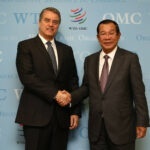
Cambodian Prime Minister Hun Sen were at the Aid for Trade Global Review 2019. Photo by World Trade Organization (WTO), taken on 03 July 2019. Licensed under CC BY-SA 2.0.International trade plays an essential role in improving Cambodia’s growth, employment and business opportunities. Trade policy ...
Disasters and emergency response
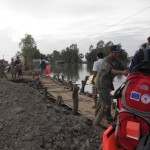
Cambodia flood, 2011. Photo by European Commission, taken on 11 October 2011. Licensed under CC BY 2.0Storms, flooding and lightning strikes are the major causes of death and property damage from natural disasters in Cambodia, while drought causes severe hardship, especially for farmers. In a ...
Ethnic minorities and indigenous people
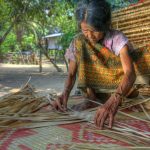
According to the Kingdom of Cambodia’s 2019 general population census, the total Cambodian population is 15,552,211 (51.31% of females).541 By 2021, the population increased to 16,589,023.542 Vietnamese, Chinese, Chams and other minorities also live in the country. Indigenous ethnic groups known as “Khmer Loeu” live ...
Development policies and administration
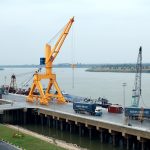
Products from Vietnam arrive at the Phnom Penh Autonomous Port in Kandal province. Photo by World Bank Photo Collection, taken on 23 February 2013. Licensed under CC BY-NC-ND 2.0The Comprehensive Cambodian Peace Agreement, commonly referred to as the Paris Agreement, is seen as the beginning ...


